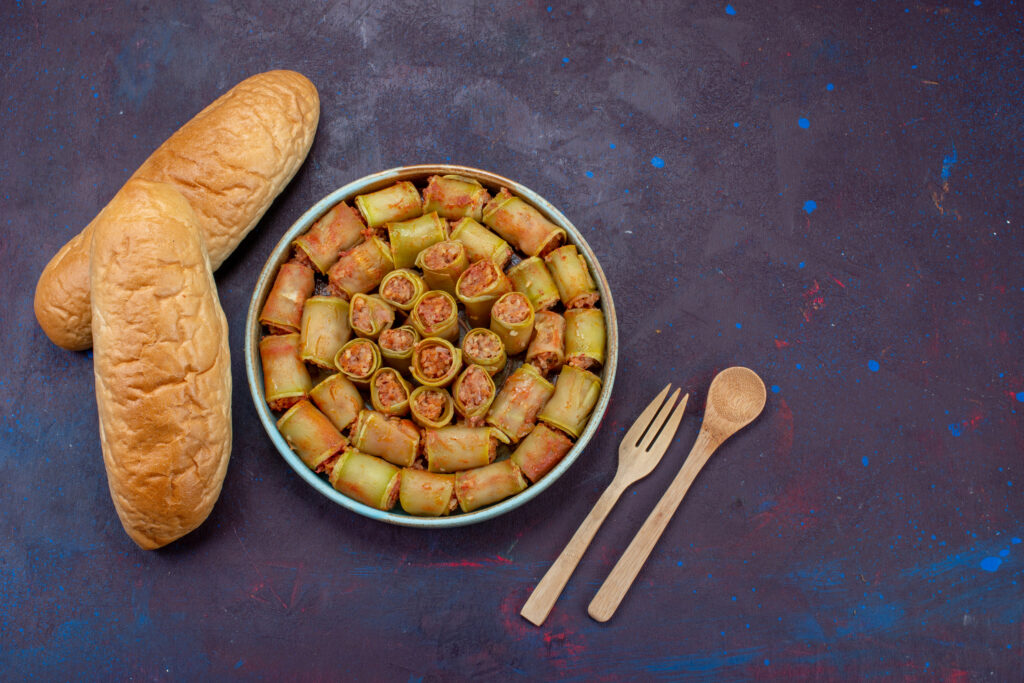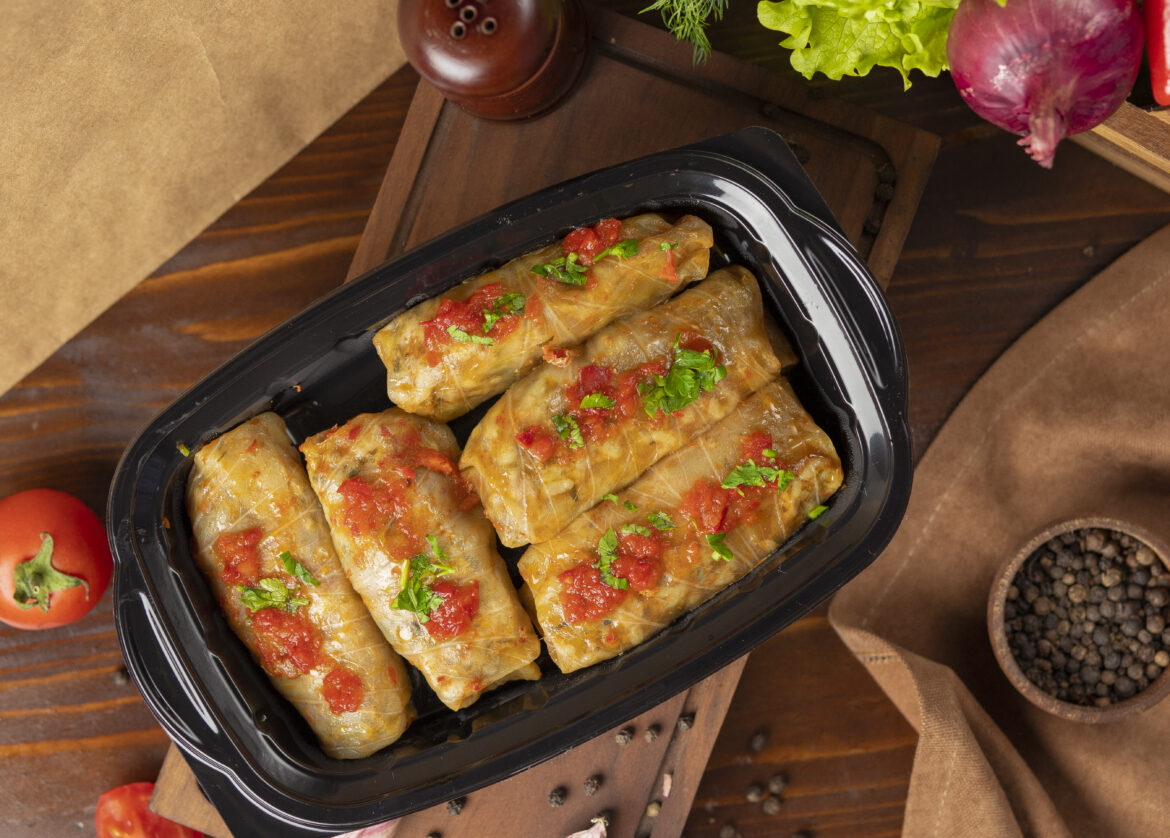Sarmale, a beloved dish in Eastern European cuisine, particularly in Romania, has captured the hearts and taste buds of many. This dish, typically composed of minced meat and rice wrapped in fermented cabbage leaves, is not just a meal but a cultural emblem, steeped in tradition and history. In this article, we’ll explore the origins of sarmale, its cultural significance, traditional recipes, and exciting modern twists that bring fresh fillings and lighter layers to this classic dish.
What is Sarmale?
At its core, sarmale refers to cabbage rolls, with the name derived from the Turkish word “sarma,” which means “to wrap.” In English, sarmale can simply be described as stuffed cabbage rolls. The dish is typically made by wrapping a mixture of minced meat, rice, and various herbs and spices inside cabbage leaves, then simmering them in a savory broth. The result is a comforting, hearty dish that resonates with many cultural traditions.
The Origins of Sarmale
The origins of sarmale are often debated, with both Turkish and Romanian influences claiming the dish. Although its roots can be traced back to the Ottoman Empire, where similar dishes were prevalent, sarmale has evolved into a staple of Romanian cuisine. In Romania, it is often prepared for special occasions and family gatherings, showcasing its deep cultural significance.
Cultural Importance
Romanians hold sarmale close to their hearts, associating the dish with family gatherings and festive celebrations. It is customarily served during holidays such as Christmas and Easter, symbolizing unity and togetherness. The preparation of sarmale is often a family affair, with generations coming together to roll the cabbage leaves and share stories, making it not just a meal but an experience that fosters familial bonds.
Traditional Ingredients and Preparation
A classic Romanian sarmale recipe typically includes ground pork or beef, rice, onions, and a blend of spices like dill and thyme. The dish is prepared by first sautéing the onions, then mixing them with the meat and rice, along with seasonings. The mixture is then carefully wrapped in cabbage leaves, which have been softened through fermentation. The rolls are placed in a pot, often layered with pieces of smoked meat or bacon for added flavor, and cooked slowly in a tomato-based sauce.
Accompanying sarmale is a traditional side of mamaliga, a cornmeal porridge similar to polenta. The creamy texture of mamaliga complements the savory sarmale perfectly, creating a satisfying and hearty meal.

Modern Twists on Sarmale
As culinary trends evolve, so too does the beloved sarmale. Contemporary chefs and home cooks alike are reimagining this classic dish by incorporating fresh fillings and lighter layers.
One popular twist involves using alternative fillings, such as quinoa or lentils, making sarmale accessible to vegetarian and vegan diets. These adaptations not only cater to a broader audience but also introduce new flavors and textures. For instance, combining mushrooms with rice creates an earthy, umami-rich filling that enhances the overall taste.
Another innovative approach is to use grape leaves, known as sarmale in foi de vita. While traditional cabbage rolls are hearty and satisfying, grape leaves offer a lighter, more delicate option. The slightly tangy flavor of grape leaves pairs beautifully with savory fillings, providing a refreshing alternative to the conventional recipe.
Health-conscious cooks are also experimenting with lighter layers by substituting traditional cabbage leaves with alternatives like zucchini or bell peppers. This not only reduces calories but also adds vibrant colors and new flavors to the dish. Baking or steaming the rolls instead of boiling them can further lighten the dish while still retaining its comforting essence.
Sarmale Variations
Sarmale is not monolithic; regional variations abound, each with its unique twist. For example, in Moldova, you might find sarmale prepared with a blend of meats, including chicken or turkey, while in Transylvania, local spices and smoked meats might take center stage. Additionally, sarmale soup has gained popularity, transforming the traditional dish into a comforting broth that is particularly appealing during colder months.
These variations highlight the adaptability of sarmale, allowing it to evolve with changing tastes and dietary preferences while remaining true to its roots.
Finding Sarmale Near You
Sarmale Near Me
Find places serving Sarmale (Romanian stuffed cabbage rolls) near you!
For those who wish to enjoy authentic sarmale without making it from scratch, many restaurants offer this traditional dish. Local Eastern European eateries often serve sarmale as a staple on their menus, making it easier to find. Searching for “sarmale near me” can lead you to hidden gems that specialize in authentic Romanian cuisine, where you can experience the dish as it was meant to be enjoyed.
Sarmale Pronunciation
To fully appreciate this dish, knowing how to pronounce “sarmale” is essential. The correct pronunciation is “sar-mah-leh.” This knowledge not only enriches your culinary experience but also shows respect for the cultural roots of the dish.
Conclusion
Sarmale is more than just a dish; it represents a rich tapestry of history, culture, and familial ties. As we explore new fillings and lighter layers, we celebrate the dish’s adaptability and enduring appeal. Whether enjoyed in its traditional form or with modern twists, sarmale continues to bring people together, making it a timeless favorite in homes and restaurants alike.
In embracing the evolution of sarmale, we honor its past while looking forward to exciting culinary possibilities. So, gather your loved ones, roll up your sleeves, and dive into the world of sarmale—where every bite tells a story.
FAQs about Sarmale
What is a sarmale?
Sarmale are stuffed cabbage rolls typically made with minced meat, rice, and spices, wrapped in fermented cabbage leaves and simmered in a savory sauce.
Is sarmale Romanian or Turkish?
Sarmale has roots in both Romanian and Turkish cuisine. While it originates from the Ottoman Empire, it has become a staple dish in Romania, deeply embedded in its culinary traditions.
What does “sarma” mean?
“Sarma” is a Turkish word meaning “to wrap,” reflecting the method of wrapping the filling in leaves, whether cabbage or grape.
Why do Romanians eat sarmale?
Romanians eat sarmale during festive occasions and family gatherings, as it symbolizes unity and tradition, often associated with holidays like Christmas and Easter.
How is sarmale traditionally served?
Sarmale are traditionally served with mamaliga, a cornmeal porridge, and can be accompanied by sour cream and fresh herbs for added flavor.
References
- Romanian Culinary Traditions and Their Influence
- The Role of Sarmale in Romanian Culture
- Historical Origins of Sarmale in Eastern Europe
- Modern Adaptations of Traditional Dishes in Eastern European Cuisine
